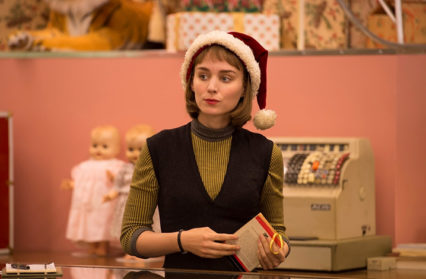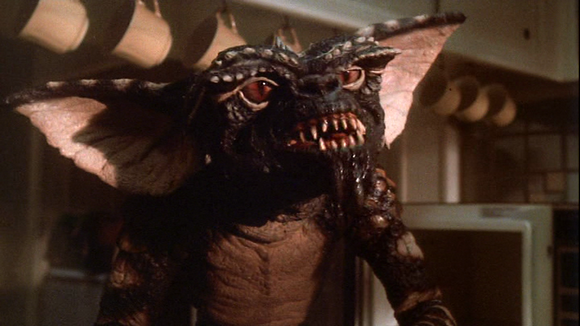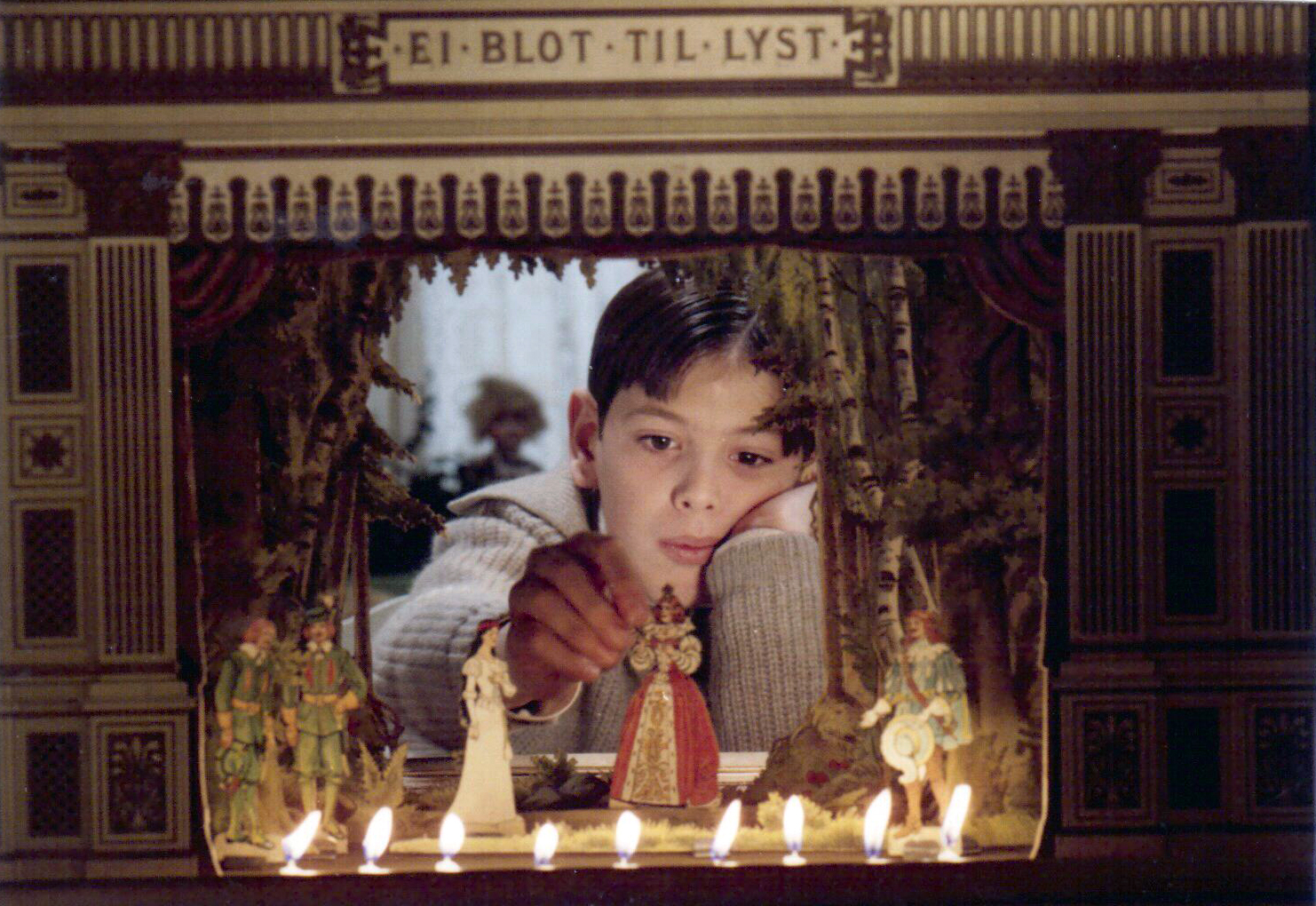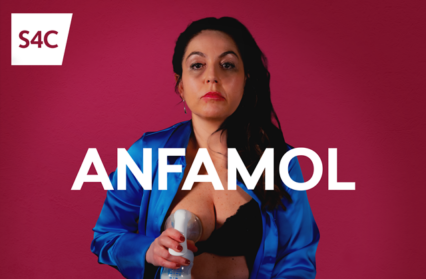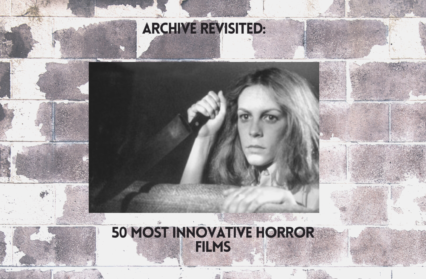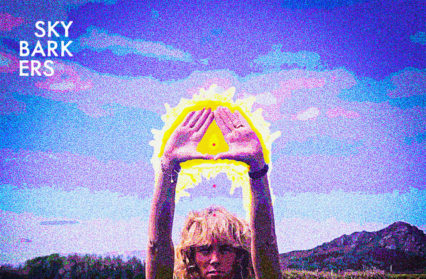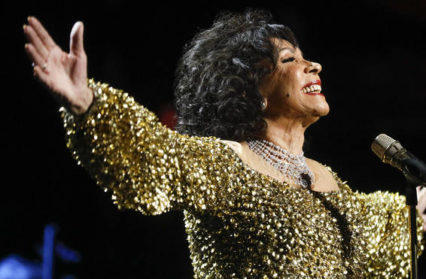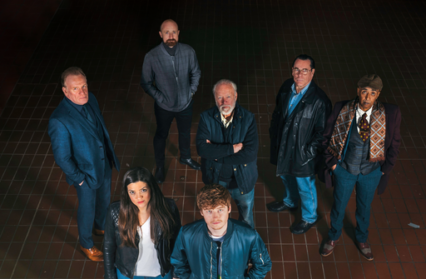Okay, so it’s not all that alternative, but here’s Craig Austin and Gary Raymond to recommend some of their top Christmas movies to help get you in that festive spirit, some considerably less obvious than others.
When Harry Met Sally (1989)
There are ‘buying a Christmas tree and dragging it home in the snow’ scenes, and then there is the ‘buying a Christmas tree and dragging it home in the snow’ scene from When Harry Met Sally. It’s not strictly a Christmas film, especially given that the passing of the seasons is a key visual backdrop to the story, but the festive season – most notably, New Year’s Eve – is a significantly major player.
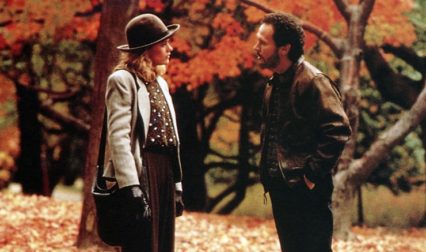 Eminently quotable, whip-crack smart, and masterfully insightful, it’s almost always the perfect double act of Billy Crystal and Meg Ryan that garners the plaudits, yet it’s the writing of Nora Ephron that really tips When Harry Met Sally into the category of cinematic great. After all, who would want to watch a film about how men and women supposedly can’t be friends if a man had written it?
Eminently quotable, whip-crack smart, and masterfully insightful, it’s almost always the perfect double act of Billy Crystal and Meg Ryan that garners the plaudits, yet it’s the writing of Nora Ephron that really tips When Harry Met Sally into the category of cinematic great. After all, who would want to watch a film about how men and women supposedly can’t be friends if a man had written it?
Ephron was nominated for the Oscar for Best Screenplay in 1990 but ultimately lost out to Tom Schulman for Dead Poets Society, and while Dead Poets Society is hardly a turkey I can guarantee that it has never made a woman miaow. CA
The Family Man (2000)
Of course, every season should present opportunities for movies of unbridled fun, and you can normally achieve this by flinging on anything with Nicholas Cage in. Luckily, in The Family Man, a kind of modern Scrooge story where Cage’s cold materialistic millionaire wakes up to spend Christmas with the family he might have had, we have not only a Cage film, but one with real heart and real charm. Cage is allowed to spend a bit of time flailing his arms and swivelling his eyes, but he also reminds us that he can do subtle and romantic. He’s in James Stewart-mode here.
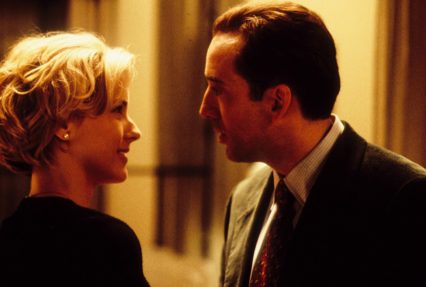 The family he finds himself with is also full of delightful surprises. Téa Leoni is excellent (not a surprise: she always is), totally convincing as juggle-all mom-and-wife, never once slipping into the blonde pearly-white-all-things-to-all-men suburban housewife of almost every American all-out-Christmas movies made since the millennium. And the kids are even rarer – charming and genuinely cute and funny; you’ll not once have the urge to dropkick any of them over Santa’s parked sleigh.
The family he finds himself with is also full of delightful surprises. Téa Leoni is excellent (not a surprise: she always is), totally convincing as juggle-all mom-and-wife, never once slipping into the blonde pearly-white-all-things-to-all-men suburban housewife of almost every American all-out-Christmas movies made since the millennium. And the kids are even rarer – charming and genuinely cute and funny; you’ll not once have the urge to dropkick any of them over Santa’s parked sleigh.
Put simply, it’s funny, charming and may just give you a lump in the throat with its not-so-neat ending. And it’s a Christmas movie with Nicholas Cage. What more do you want?! GR
The Ice Storm (1997)
The sexual revolution is in full swing, the Watergate scandal is about to explode, and the affluent citizens of New Canaan, Connecticut, are bored, jaded and looking for answers to questions they’re barely capable of posing.
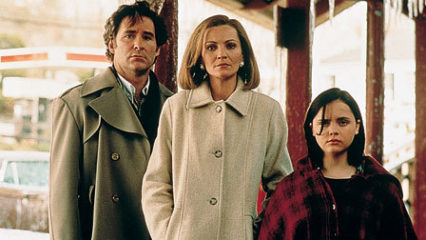 Based on Rick Moody’s book, and heavily influenced by John Updike’s Couples, Ang Lee’s late 90s masterpiece takes place between Thanksgiving and Christmas in a nation that is at war – in Vietnam, and with itself. The Ice Storm is a perfect metaphor for this disengagement, one that is evidently about more than the calamitous winter weather event to which all of its plot strands lead.
Based on Rick Moody’s book, and heavily influenced by John Updike’s Couples, Ang Lee’s late 90s masterpiece takes place between Thanksgiving and Christmas in a nation that is at war – in Vietnam, and with itself. The Ice Storm is a perfect metaphor for this disengagement, one that is evidently about more than the calamitous winter weather event to which all of its plot strands lead.
Featuring a stellar cast of Sigourney Weaver, Kevin Cline, Christina Richie and Tobey Maguire, The Ice Storm is a compelling, often bleak study of puberty, suburbia and the Summer of Love’s crippling hangover. Its marvellous score is a particular highlight, reflecting as it does the brittle glacial undertones of a film that expertly captures the bridge between the 60s and 70s in ways that can at times take your breath away. CA
Trading Places (1983)
Eddie Murphy may be slightly miscast in a role that frequently requires him to act with modesty, but he still shines in the comedic moments and is the perfect foil for Dan Ackroyd’s awful rich ivy league snob Louis Winthorpe III, with whom he trades places. The reason is a rich boys’ bet, and somewhere in here is a sledge hammer of a morality tale. But it all has a bit of a Reaganite smudginess to it. Murphy and tart-with-a-heart Jamie Lee Curtis may be the poor moral centre of the movie, but they are also undoubtedly “made better” by money before the movie is out. But this is a noble attempt at a Reagan-era/Dickensian mash up, and there is much joy to be had in the comeuppance of the villains.
 But, apart from that, it is eminently enjoyable, with great performances, and plenty of iconic moments. Ackroyd was perhaps never better in what is pretty much a straight role – his descent into bum-dom is glorious, and the scene where he pulls a whole sea bass out of his greying Santa’s beard and begins to drunkenly chew on it still makes me gag at the thought of it. And nobody has ever been able to offer me egg nog without making me want to watch Denholm Elliott movies for the rest of the evening. (Incidentally, Elliott and Curtis won Oscars for their performances).
But, apart from that, it is eminently enjoyable, with great performances, and plenty of iconic moments. Ackroyd was perhaps never better in what is pretty much a straight role – his descent into bum-dom is glorious, and the scene where he pulls a whole sea bass out of his greying Santa’s beard and begins to drunkenly chew on it still makes me gag at the thought of it. And nobody has ever been able to offer me egg nog without making me want to watch Denholm Elliott movies for the rest of the evening. (Incidentally, Elliott and Curtis won Oscars for their performances).
Trading Places was, in the 1980s, an overt attack on the way the rich of Wall Street not only isolated themselves from the widespread poverty in New York at the time, but how they arrogantly looked down upon the poor as a subspecies. It is a film not just about social inequality as constructed by capitalism at its most pure, but it is about attitudes indentured by generations of Big Money hoodlums from father to son. Don Ameche and Ralph Bellamy’s scheme is undone by their progeny learning different lessons from the ones they were taught and tried in vain to pass down. But it was they who set all the action in motion; they are the architects of their own downfall. Trading Places is absolutely a movie for our times now. GR
Carol (2015)
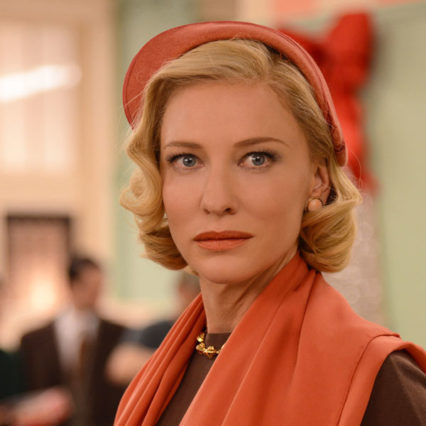 A perfect love story from Todd Haynes, Carol is an instant classic in the purest Hollywood sense. Using the brilliant Patricia Highsmith novel, The Price of Salt, as source material, Haynes carefully constructs both narrative, character and era with a meticulous sense of coherence. It is filmed with style, acted with glances and silences, and delivered with a script that does not waste a syllable. Carol and Therese meet in a department store at Christmas, Therese (Rooney Mara) in embarrassing santa hat serving the sophisticated older lady, Carol (Cate Blanchett), as she tries to buy a doll for her young daughter. The encounter is the moment of Therese’s awakening, and eventually comes to mean something just as significant to Carol too. What comes during the next 90 minutes is a film where every scene aches with the unsaid, which makes the perfection of the ending all the more elating.
A perfect love story from Todd Haynes, Carol is an instant classic in the purest Hollywood sense. Using the brilliant Patricia Highsmith novel, The Price of Salt, as source material, Haynes carefully constructs both narrative, character and era with a meticulous sense of coherence. It is filmed with style, acted with glances and silences, and delivered with a script that does not waste a syllable. Carol and Therese meet in a department store at Christmas, Therese (Rooney Mara) in embarrassing santa hat serving the sophisticated older lady, Carol (Cate Blanchett), as she tries to buy a doll for her young daughter. The encounter is the moment of Therese’s awakening, and eventually comes to mean something just as significant to Carol too. What comes during the next 90 minutes is a film where every scene aches with the unsaid, which makes the perfection of the ending all the more elating.
It is not just the fact the film is a love story set at Christmas that puts it on this list, though. It is a film set in certainly one of the most Christmassy of settings: Manhattan of the 1950s. This is pretty much where modern capitalism was born, where modern Christmas was born, and so there is also a romance to the frosted sidewalks and decorated department store windows. It is the opposite end of the scale to the Dickensian scene, but no less evocative, no less sugary. Hollywood sculpted this with the likes of Cary Grant, Marilyn Monroe and all of those perfectly formed stars at their peak. Carol is realist, yes, but it also recognises the ghosts of this part of film history, and it all comes together to create a feel that supports the emotional impact of the story. GR
The Muppet Christmas Carol (1992)
Aside from its commendable commitment to respecting Dickens’ original text, its refusal to patronise neither its audience nor its primarily puppet cast, and its welcome absence of any ‘third wall’ breaking side-eye, it’s the career-high performance of one of its primary players that truly defines The Muppet Christmas Carol.
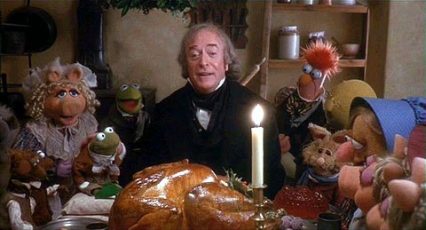 I speak not of course of the splendid portrayal of Ebenezer Scrooge by Michael Caine – an actor whose actual name is lovingly reflected in the 19th Century shop-front of ‘Micklewhite’s’ – but of the performance of one Rizzo the Rat, whose love/hate rapport with a plausibly Victorian Gonzo provides some of the film’s finest wisecracking dialogue and personal interplay.
I speak not of course of the splendid portrayal of Ebenezer Scrooge by Michael Caine – an actor whose actual name is lovingly reflected in the 19th Century shop-front of ‘Micklewhite’s’ – but of the performance of one Rizzo the Rat, whose love/hate rapport with a plausibly Victorian Gonzo provides some of the film’s finest wisecracking dialogue and personal interplay.
I have learnt many festive – and life – lessons from Rizzo, not least the one that Rizzo’s mother taught him about the festive treats upon which we will soon feast: ‘never eat singing food’. CA
The Haunting (1963)
Christmas has an obvious association with ghost stories. It’s a delicious Gothic relationship that has something to do with the delightful childish willingness to be frightened. And it also has something to do with Victorian costumes and large dominating staircases weaving through the all-following eyes of ancestral portraits. It is about things that go bump in the night, sure; but also a connection to a time when Christmas was in its prime – a time when it always snowed and there were toy soldiers and skating on ponds. Dickens did it to us, of course, bringing spirits to Ebenezer Scrooge’s bedroom chamber. A Christmas Carol has had a cultural effect on the Christmas-celebrating world like no other single creation. It has created Christmas, arguably, even more than it has reflected it. But it is not Dickens’ short story (or the many excellent movie adaptations that have followed it) that makes my list.
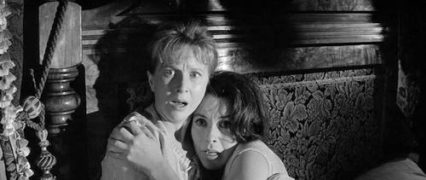 I remember vividly the first time I saw what was to become one of the most important movies to me. I was thirteen, and I was watching television in bed, deep into the night of Christmas Eve, and not a creature was stirring, when the BBC decided to air Robert Wise’s 1963 film of Shirley Jackson’s novel. It has embedded into me so deeply, that chief among the reactions I have to its mention is an aching longing for it to be Christmas Eve 1992 again, and for me to be tucked in, duvet up to my eyes, experiencing the film for the first time.
I remember vividly the first time I saw what was to become one of the most important movies to me. I was thirteen, and I was watching television in bed, deep into the night of Christmas Eve, and not a creature was stirring, when the BBC decided to air Robert Wise’s 1963 film of Shirley Jackson’s novel. It has embedded into me so deeply, that chief among the reactions I have to its mention is an aching longing for it to be Christmas Eve 1992 again, and for me to be tucked in, duvet up to my eyes, experiencing the film for the first time.
The Haunting is a masterclass in old school cinematic fright, what the studios used to call ‘terror’. From that moment Christmas to me has been not sleigh bells and snowmen, but witches teetering on rickety iron spiral staircases and the heart-stopping crashes of unseen demons. And the odd thing is, I have no doubt my Christmases have been greatly improved by the advent of that dark fork in the road for a thirteen year old boy. GR
Go (1999)
I’ve always loved how Californians readily embrace the traditional Victorian snow ‘n’ sleigh take on the season despite living in a state where the sun produces so much solar power that the electricity prices can occasionally turn negative.
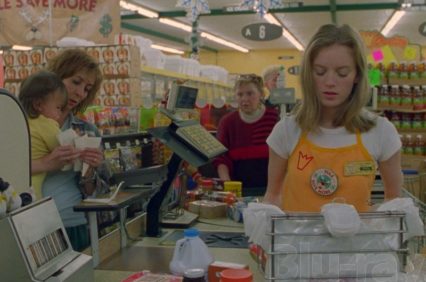 As such, there’s not a single flake of snow in Doug Liman’s LA-based Go, a thrill-ride of a flick that caught the subsequent commercial wave of the director’s low-budget but hugely influential indie phenomenon Swingers.
As such, there’s not a single flake of snow in Doug Liman’s LA-based Go, a thrill-ride of a flick that caught the subsequent commercial wave of the director’s low-budget but hugely influential indie phenomenon Swingers.
A collection of interconnecting stories that reaches its denouement in an anarchic ecstasy-fuelled Christmas rave it notably features a livewire Dawson’s-era performance by Katie Holmes from a time before Tom Cruise rigged her up to the electropsychometer. It also features – in New – an absolutely killer theme tune by No Doubt, and the hedonistic mantra of the nocturnal minimum wage-slave that ‘life begins at 3am’. CA
Gremlins (1984)
Grizzly, terrifying, hilarious kids fun. One of the most iconic movies of 80’s Hollywood output, Joe Dante proved himself perhaps the only kids-movie-maker to give Spielberg a run for his money during this period. It is ingenious and weird, and does so much with the urban myth of little green creatures that climb into machinery and cause havoc. Written by Chris Columbus and produced by Spielberg (who recognised Dante as a visionary), it has a solid gold team at the top – Columbus also wrote The Goonies, and went on to direct Home Alone, Mrs Doubtfire, and a couple of the Harry Potter movies.
Gremlins is a Christmas film because it takes place at Christmas, but also because it uses the sounds and sights of Christmas as part of the fabric of its frights – from Christmas lights to Christmas crooning, Gremlins attempts (and succeeded for any kid of my generation) to change the perception of previously innocuous iconography. And you get to see a Gremlin blow up in a microwave. GR
The Apartment (1960)
Imagine being the kind of person whose heart is so flinty and black that it cannot be warmed by even the mere mention of The Apartment… If you’ve yet to see it, I don’t pity you, I envy you, for the human joy that you are about to embrace is wholly in keeping with the spirit of Christmas.
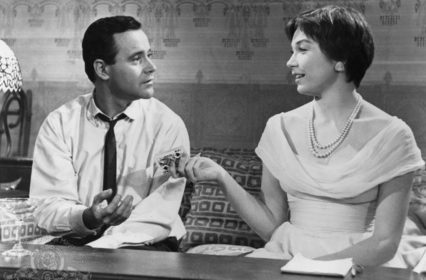 It’s not a traditional Christmas film, but an office Christmas party does form a pivotal point in the movie; the moment when Jack Lemmon’s lonely insurance bod, C.C. Baxter, discovers that the object of his affections, Shirley MacLaine’s Fran, is conducting a clandestine affair with his boss.
It’s not a traditional Christmas film, but an office Christmas party does form a pivotal point in the movie; the moment when Jack Lemmon’s lonely insurance bod, C.C. Baxter, discovers that the object of his affections, Shirley MacLaine’s Fran, is conducting a clandestine affair with his boss.
Upon discovering that she may not be the only secretary to have been taken in the older man’s questionable charms MacLaine’s character later overdoses on sleeping pills, and though I’m hardly making The Apartment sound in any way festive, I promise you that there is a happy ending and so much human joy to be garnered in getting there.
I can also guarantee that you will never strain your spaghetti in quite the same way again. CA
Fanny and Alexander (1982)
The greatest work of cinema’s greatest artist is not entirely a Christmas movie, but Ingmar Bergman’s epic opening chapter of his final movie is the most enchanting evocation of a family celebration ever committed to celluloid. The Ekdahl’s Christmas is a snowy, glistening joyous event, taking in a theatrical performance, a sumptuous feast, and the scurrying “otherworld” of the magic of a child’s experience. You can almost taste the rich foods, feel the warmth of a house full of love and mischievousness. Fanny and Alexander is also as beautiful to look at as anything put on film in the twentieth century – Bergman, always a very personal artist, was representing his own family Christmases as a child.
Of course, as you would expect from Bergman, there is a chill at the centre of all this candled warmth, and the second and third acts of the film are as grey and sullen as the opening is bright and joyous. But Fanny and Alexander is a life-affirming movie in the end (even if you go for the original television cut of five and half hours – it is worth every immersive moment). The fantasies of Fanny and Alexander hold the real hope, and the movie plays with an array of ideas about theatricality, storytelling and reality. There are several ghosts – again connecting Christmas to that wintry supernatural thread – and the final message is that any fantasy can become reality. And isn’t that ultimately the promise of every Christmas story? GR


